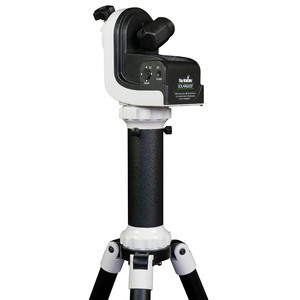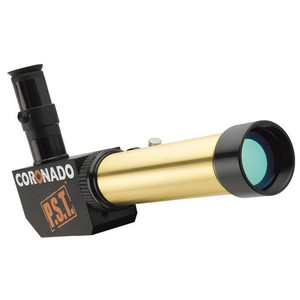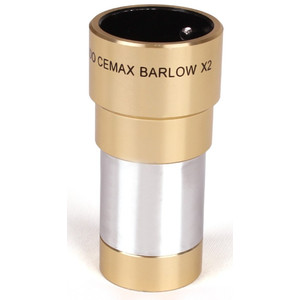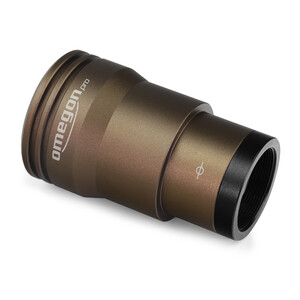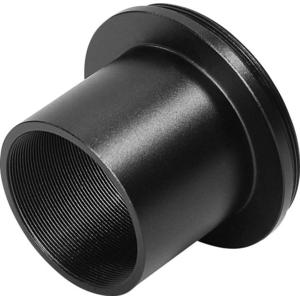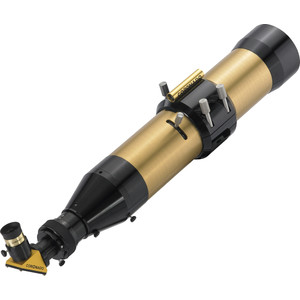First light with the Coronado ST 70/400 Solarmax III DS
In October, after a waiting a while for delivery, I received the Coronado ST 70/400 Solarmax III DS telescope with a 15mm blocking filter.
Although a different set-up was already available, an old Solarmax 90/BF30 system by Coronado (the corroded blocking filter for which had been perfectly repaired by Astroshop), I wanted a smaller, lighter weight complete unit for fast, comfortable observations with minimal barriers to set-up.
It was clear to me that the resolution for a 60mm clear aperture cannot begin to compare to that of “large” systems, as this is physically limited. I had also previously had a Coronado 60mm with a 15mm blocking filter so I knew what I was letting myself in for. That was why I wanted a double stack this time.
The device comes in a sturdy aluminium case which adds a bit of weight but is not cumbersome. Its foam padding is so firm that it takes some effort to safely remove the device. Removing the eyepiece for the first time can become a real challenge! I already knew that it only came with an 18mm eyepiece and I already had a Coronado Cemax Barlow lens and other eyepieces. It’s a shame that a 12mm Cemax, which would be a sensible fit given the magnification, does not appear to be separately available at all.
After a forced break of around a quarter of a year due to the weather, I was able to use the small solar telescope in good conditions on 7th February – frost-free as Solarmax H-alpha systems should not be used in frosty conditions - and very clear skies. Aa a comparison the older Solarmax 90/BF30 on an achromatic Vixen 102/1000 refracting telescope, both placed one after the other on an azimuthal TeleVue Gibraltar mount, with a prism clamp with double clamping screws mounted on its fork. The ST 70/400 is well mounted although the Coronado prism rails have no front brakes. Admittedly, there are notches for the fixing screws on the side but they are useless when you are working with adapters with large contact surfaces. Resultantly, despite securely tightened screws, the lens tube slowly slid back by a centimetre during observation. I have since installed a brake in the dovetail rail using a nut and bolt.
The drawtube makes large and find adjustments very smoothly and precisely. Remove plastic cap before use!
According to the operating instructions, the T-Max tuner is used to gently tip the outermost etalon until the double images disappear from the visual field, then the detail contrast is set using the large Rich View slewing ring. The second etalon can then be gently tilted until the illumination matches up. However, you can also do this the other way round and start with the Rich View tuner. Due to its low focal length of 400mm, the device is so short than you can comfortably adjust all tuners with the stretch of an arm without taking you eye off the eyepiece.
The Sol Ranger sun finder serves its purpose well but is not super precise, meaning that I can find my target just as quickly using the shadow method.
Now to the image... The image is very clear and high in contrast in a pleasing “natural” orange tone, the surrounding area pitch black. Filaments appear dark, flares are extremely bright. The 18mm eyepiece is perfect for quick wide-angle observations. For higher magnifications, I have tried other eyepieces - due to its transparency, a 7.2-21.5mm zoom eyepiece from Lunt proved itself to be the best. But higher magnifications in a double-stack device with a small aperture produce very dark images.
As expected, the detail resolution does not match that of the Solarmax 90, so everything seems more effortless, but the contrast is lower. The Solarmax 90 with its repaired BF30 blocking filter has such a bright image that it makes sense to use a blue-green filter or a polarising filter in order to better recognise details. Filters are not required for the smaller device. Both devices react naturally to fluctuations in seeing and it is clear that nothing amazing could be expected from the low-lying early-February sun. Amazingly, slight cloud cover made arguably no difference.
The heavily-promoted 3D effect kicks in with the Coronado if you “scan” a little using the etalon and the Rich View tuner. Dark filaments then appear as though they are hovering.
It would also be remiss not to mention that it appears initially as though it would be difficult to manage to achieve uniform lighting across the image. I suspected this after Ullrich Dittler’s test review (https://www.astroshop.de/magazin/test/teleskop-tests/coronado-solarmax-iii-70mm/i,1419) and had it confirmed by images published online. You also need to readjust occasionally using the etalon and the Rich View tuner. Meanwhile, it has been confirmed that the 1st elaton should never be tipped too heavily - at low magnifications, the double images should still be visible at the edge. At higher magnifications, the double images should be completely outside the visual field.
At first light on 7th February, I had the unbelievable luck of being able to observe a spectacular prominence in its entirety using the small Solarmax ST 70/400. I cannot remember ever having observed such a bright and large eruption, this was an M1 class flare on the rear of the Sun. Initially visible as a blindingly bright lump on the Sun’s edge and developed into a bright double loop which grew rapidly and revealed lots of bright, clearly defined and high-contrast details – an amazing experience which showed what this small device can do – and all this even though you should expect to be able to view prominences better at 0.7 angstroms than using a double stack with a bandwidth of < 5 angstroms. Its bigger brother had not even been mounted so as not to miss anything.
All in all, the ST Solarmax III 70/400 had a good debut and I am excited to see what awaits me in even better conditions. In any case, you can quickly be ready for observing using the small device. Set-up and alignment takes less than 3 minutes. It is a shame that it is too heavy for a Skywatcher Solarquest AZ mount and other small solutions – the double stack weighs around 4.4kg. So it makes sense to have a solid foundation. I am generally of the opinion that a perfect tracking system is desirable for solar observation. All in all, this purchase was worth it - the device meets my expectations and is a good addition to larger devices.
(Eva Seidenfaden)

